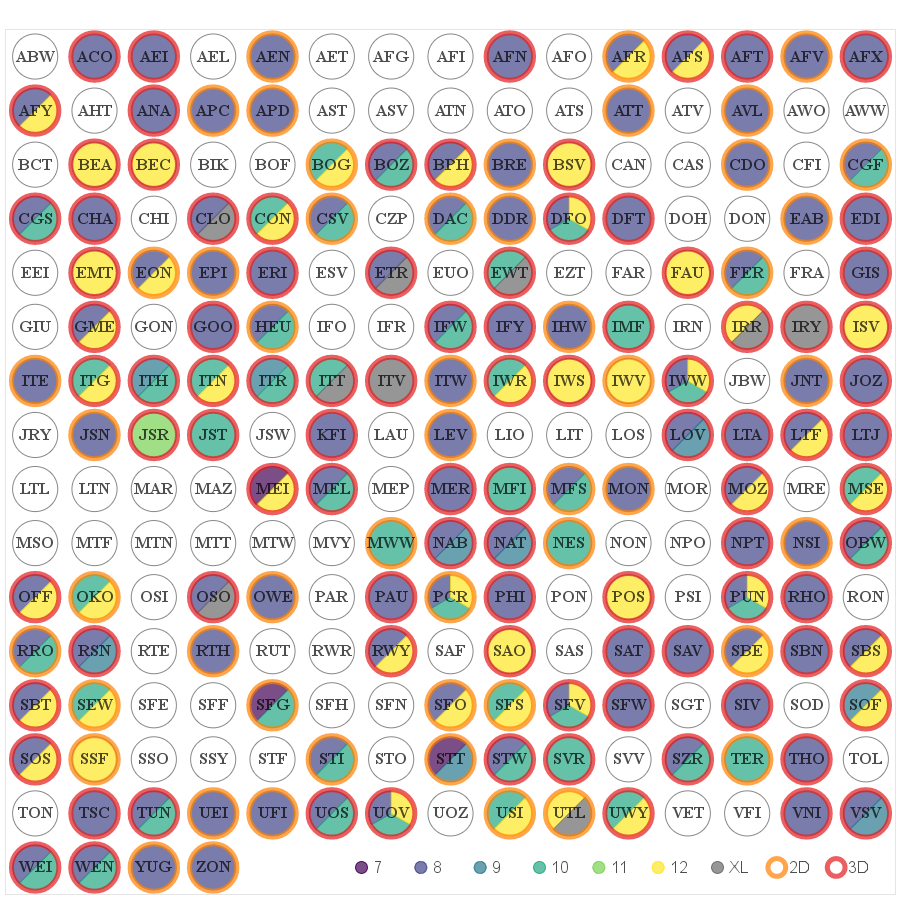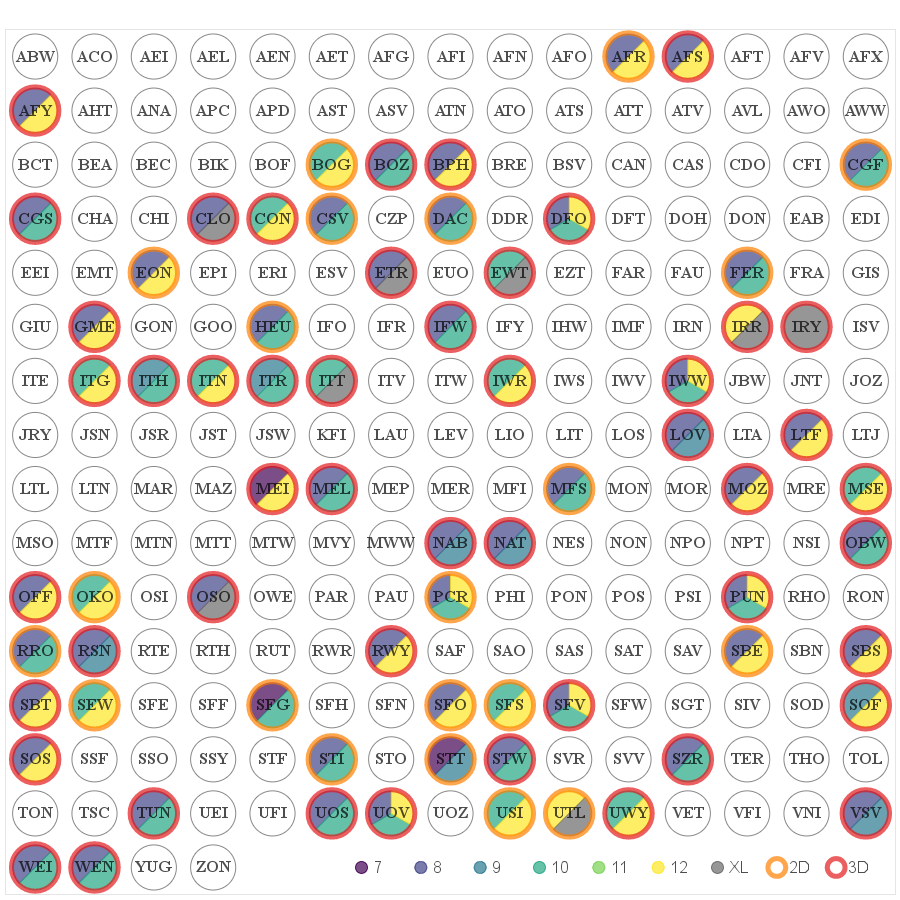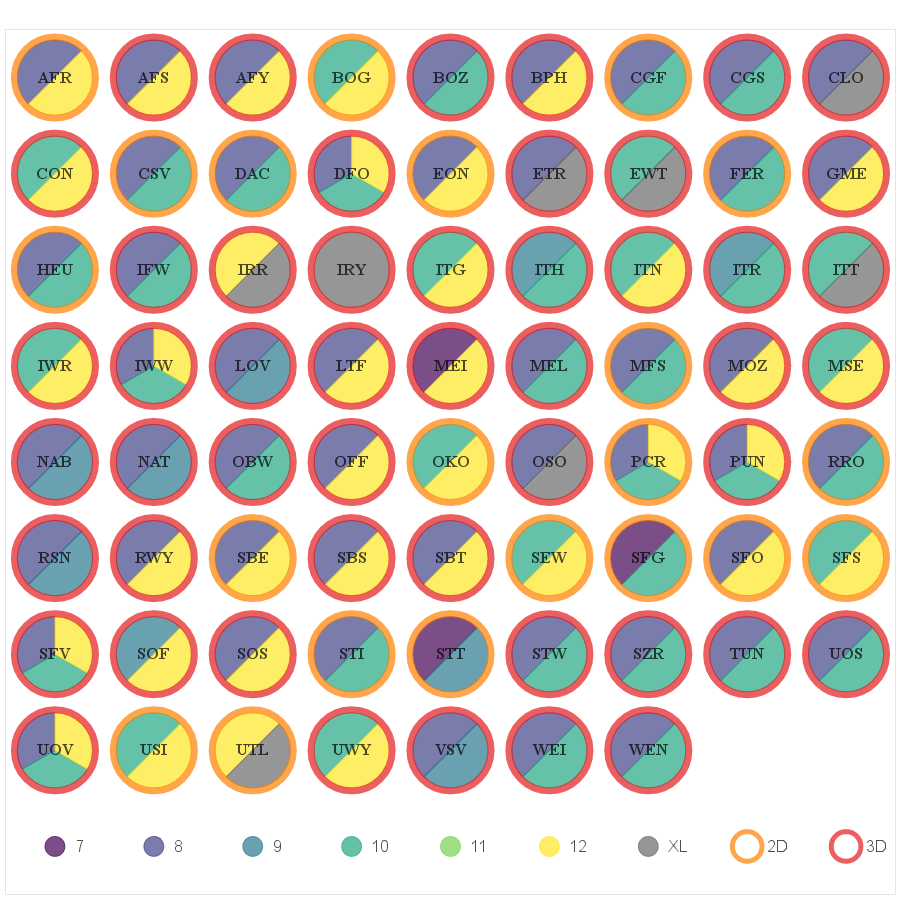zeolites python pandas 22 April 2017
Zeolite Framework Classification II
Visualization of zeolite topologies classification, part II.
In my previous post I was exploring the database of of zeolite frameworks using Python, bokeh, pandas and my own zefram package that provided easy access to the data on zeolite frameworks available from the IZA database and ZEOMICS.
To explore the topic further I thought that a grouping of the frameworks into one-dimensional (D=1) and multidimensional (D=2 or D=3) might be useful. Such a distinction is largely related to the applications since multidimensional frameworks have unique topological features such as channel intersections that allow different phenomena to happen.
Among the frameworks with multidimensional channel structures there are ones that have multiple channels of the same size, for example AEI having 3 distinct channels each along [100], [110] and [001]. The complementary group would be the frameworks that have at least two intersecting channels that are of different size. The latter group is usually referred to as multipore zeolites.
An important phenomenon contributing to the unique properties of multidimensional frameworks is the so called molecular traffic control which occurs where there are at least two molecules of different size or shape where one of them prefers to travel (diffuse) along one channel system and the other one travels along a different channel system. This fact together with the knowledge of the relationship between the molecule's size and it's preference to choose a channel of specific size can be used to tune catalytic processes occurring over zeolites. A recent review article about multipore zeolites explores their catalytic applications and the role of molecular traffic control.
Figures
The figure below presents all the frameworks with the zero- and one-dimensional ones not colored. The multidimensional frameworks can be either two- or three-dimensional which is indicated by the color of the outer ring. The inside of each circle indicates the composition of the channel structure in terms of the distinct channel sizes. If a framework is three-dimensional but only has channels on one size, such as AEI it will be filled with a single color. If there are channels with more than 12 T atoms they are considered extra large (XL). Since extra large channels exhibit very poor selectivity no distinction is made here between them and they are treated as a channel of single (but very large) size.

Finally since I mentioned that multipore zeolites are often teated as a separate category I decided to created a separate figure where only the multidimensional frameworks that have at least two channels with different sizes are highlighted.

For clarity and easier navigation I also created a graphic where only the multipore frameworks are included with the same color coding as above.

As in the previous case uploaded a jupyter notebook that I used the generate the plots to a github repo. There are also some additional plots at the bottom of the notebook.